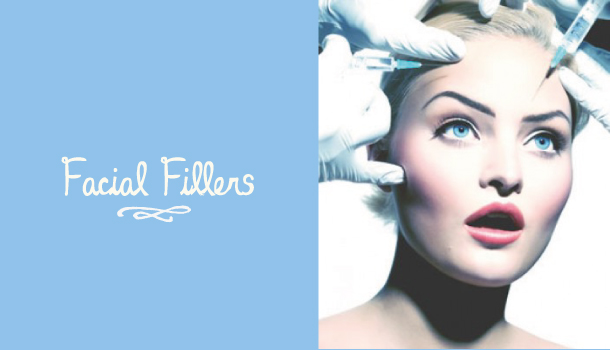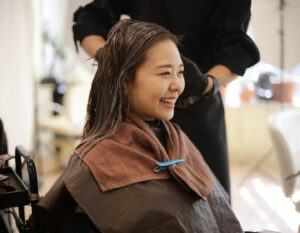

I’ve had many patients come up to me over the years and ask what the difference is between dermal fillers and botox, which are often confused for one another. Before you decide to have any medical cosmetic treatments done, it’s critically important to have thoroughly done your research, so let’s discuss what facial fillers are and whether they’re right for you!
What’s the difference between botox and facial fillers?
The easiest way to differentiate botox and facial fillers is to apply the analogy of ‘hills and valleys’ – botox relaxes and smoothes out the ‘hills’ while fillers fill in the ‘valleys’. Fillers also fall under the umbrella term of injectables; as the word implies, fillers are delivered into the skin via a needle injection. Needles can be the traditionally sharp ones or ‘blunt’ tipped ones that are known as cannulas. The latter reduce bleeding and bruising because they are often too dull to puncture blood vessels. They are generally longer, so they can reach larger areas with a single injection. The decision to use needles or cannulas depends on the physician (i.e. training, skill, experience and personal preference), the product (dense vs. thin fillers), the target area (small or larger area, flat or curved plane) and the client’s preference.
What types of fillers are available?
Fillers cover the spectrum from temporary to long-lasting. Temporary fillers are gradually absorbed and removed from our bodies. Hyaluronic acid (HA) is a substance we naturally have in our skin. HA draws water which leads to tissue swelling and fullness. Medical grade HA (i.e. Juvederm, Restylane / Perlane, Teosyal) are bio-degradable, from non-animal sources and with almost no allergic reaction. They are made into different densities and can last from four months to 2 years. There is also an ‘antidote’ that can dissolve HA.
Longer lasting fillers, such as Sculptra, Derma Veil and fat grafts, are used for larger areas of volumisation and can last up to two years. Semi-permanent or permanent fillers such as Radiesse and Aquamid last even longer and have substances such as calcium or polyacrylamide gel, respectively, that are not absorbed by the body. ArteFill (PMMA) is FDA approved, but not available in HK. Finally, fat grafts and long lasting or permanent implants, which are often made of silicone, gortex or polyethylene, require surgery.
The duration of injectable fillers depends on a number of variables including area injected (dynamic vs static), product used, injection technique (depth of injection, bolus vs drops) and the person’s activity level (athletic, high metabolism).
Which areas of the face are usually targeted?
Potentially, the whole face can be filled. The famed “Liquid Facelift” consists of a combination of botox and fillers administered within the same session, and can be applied around the whole face from scalp to chin in order to reshape facial contours. This procedure is popular with many Asian patients, who desire a more ‘heart-shaped face’ and a pointier chin to elongate the face. A modified version of the Liquid Facelift incorporates using Korean PDO threading to minimise a double chin in the same session. Results are seen immediately, but are best after one week when the swelling and/or bruising has subsided, botox has kicked in and the skin hydration from the HA has taken effect.
The “Injection Nose Job” is achieved with a filler in 15-30 minutes (including prep time) and the results can be quite dramatic. Fillers applied here can change the outline/profile of the nose including the nasal bridge, can narrow the nostrils and lift up the tip of the nose.
For very athletic and thin people, who have very little facial fat, fillers are excellent for plumping up volume. Areas that are suitable for fillers include: forehead (ridges, irregularities), temples (to correct “peanut or gourd head”), brows, under the eyes, superficial fine lines, ears, nose (nasal bridge), cheeks/cheekbones, naso-labial folds, lips, smoker’s lines, pre-jowl sulcus, chin, Marionette (puppet) lines, hands, décolleté, breasts, buttocks and feet.
Is the procedure painful, and what is the recovery period?
The amount of pain experienced varies from patient to patient. Strict hygiene during and after the procedure is always advised. This includes proper cleansing of the skin (I prefer 70% alcohol pads that are individually wrapped), wearing gloves (on at least the hand touching your face), not speaking or wearing a mask from the doctor (so you don’t get spit on), waiting for the injection points to stop bleeding (unless it’s Halloween and you’re going for an authentic ‘bloody look’!) and application of antibiotic topicals (gels, creams or ointments) or plasters over the injection sites.
Pain management before, during and after the procedure depends on the doctor and the client’s preference and the product(s) used. Lidocaine is pre-mixed into most of the products. Lidocaine-free products are primarily reserved for those who are allergic to lidocaine. Topical numbing cream can be applied 5-20 minutes prior to injection. Ice applied directly to the area during and after the procedure also helps. Oral analgesics can also be taken before or after the procedure.
Downtime varies with the procedure and individuals. Some have no downtime, while others may have itching and redness with possible bruising that takes about a week to subside. An unwanted, but possible outcome, is infection at injection sites. Other side effects that are rare, but possible and have been reported include blindness, necrosis of tissue/part of the face and formation of nodules/granulomas.
What other advice can you give?
Go to an experienced aesthetic physician who uses unexpired, original manufacturer products that are government registered (i.e. FDA, CE, and local Department of Health). Go to someone you feel confident in and comfortable with discussing your concerns and goals.
There are several ‘Buyer Beware Bad Practices’ that you should be aware of. There are companies that acquire various products from overseas that are unregulated and improperly stored. For example, botox from a neighbouring country may be marginally cheaper, but they may be shipped without refrigeration as required. Some larger volume HA products or vials of Sculptra are divvied up into smaller syringes, are shared and sold at discount. It is reasonable to request the products to be opened in front of you! You should check the expiry date and the seal on the packages. Original manufacturers almost all have hologram stickers and many products have removable stickers with lot numbers and expiry dates to keep on your record for future reference. If you want further information, you can contact manufacturers directly to confirm authenticity of the products. Some practices offer packages that seem too good to be true. For example, buying five vials of Sculptra injected into one face over one year is just too much. Overfilling will yield a shiny, plastic, waxy look that is unnatural and puffy.
In general, if the product is the same, you are paying for the experience and skill of the doctor and the location of the practice. As with all invasive treatments, I suggest you do some research (i.e. internet, ask friends/family), get a consultation with a physician experienced in aesthetics, discuss your goals and expectations, get a quotation on the final cost and be informed of the risks involved. Also, see if the practice has a follow-up policy, where they will help you dissolve any HA filler you deem as too much after the swelling has subsided. Before and after photos taken by the practice and by you (often on cell phones these days) are always a good idea. Remember to read the fine print about sharing your photo on the consent form. Imagine the surprise if you see your face plastered on the side of a bus!
 View All
View All











 View All
View All





 View All
View All


 View All
View All














